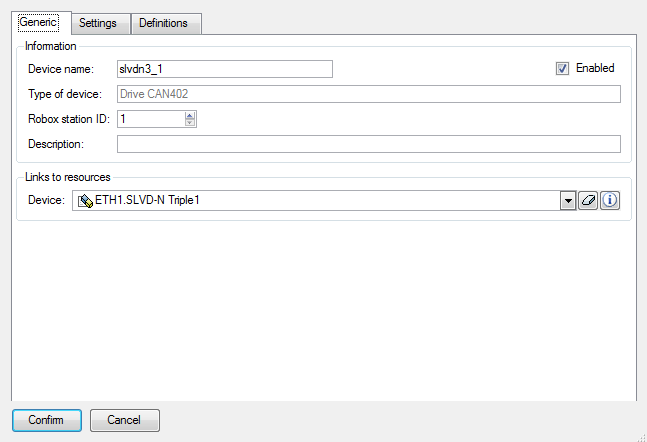To manage Parker drives connected in EtherCAT in advanced mode, it is necessary to properly configure the transducer and actuator of the axis in question through the project configurator.
The advanced mode allows you to:
•Manage different types of homing (MVA_ZC). Typical example is quota picture on micro or micro homing with subsequent search for motor position within turn or at mechanical limit switch with torque reduction
•Use from application the instruction pos_capture_cmd
•Extended diagnostic in report (verbose) of emergency messages (if enabled)
•Second or third axis management (up to three drives can be connected to an EtherCAT node)
The operations to be performed are:
Select from project configurator--> axes--> tab transducer:
•Transducer type: EtherCAT Coe (configuration of an absolute transducer)
•Drive type: the drive model used and the station within the node
•Auxiliary parameter 1: represents the digital input channel where the homing micro is physically wired
Transducer type |
Value |
Description |
|---|---|---|
CANOPEN PARKER - SBC (type HID 1 or TPDM) |
0 |
Instant photo of the start of the rotation resolver or photo on channel |
1 |
in0 on drive |
|
2 |
in1 on drive |
|
3 |
in2 on drive |
|
<0 |
Disable capture |
|
CANOPEN PARKER - SBC (type SLVD 1) |
0 |
Instant photo of lap start rotation or photo on channel |
1 |
in0 on drive |
|
<0 |
Disable capture |
Select from project configurator--> axes--> actuator tab:
•Actuator type: EtherCAT Coe
•Drive type: the drive model used and the station within the node
Associate a remote device, of type "drive can402" to the axis just configured. This operation allows you to:
•Associate the drive (device), selected from the list of hardware resources connected to the network (links to resources), to the Robox station ID of the desired axis

•Associate real quota information to CP, status information to status word, command information to control word, and auxiliary information for quota photos

By associating the EtherCAT terminal (drive) with a remote CAN402-type device, it is possible:
•Synchronous communication via PDO, in accordance with the XML file
•Asynchronous communication by SDO from program with the appropriate functions or from shell with the appropriate commands (see COE)
•Management of the DS402 state machine by RTE in accordance with the POWER SET configuration
•Automatic diagnostic by RTE about operational status and emergency messages with axis alarm handling:
o18#nn RFB ws <id> fault <code>
o19#nn RFB ws <id> emcy <0xeeee> <0xqqttdduu>